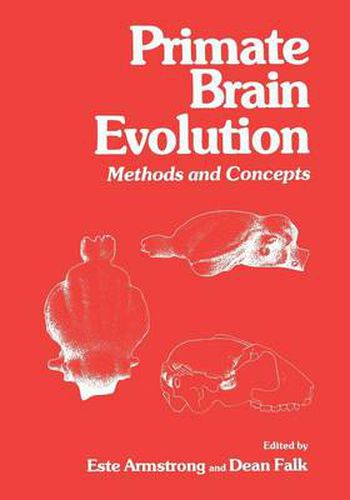Readings Newsletter
Become a Readings Member to make your shopping experience even easier.
Sign in or sign up for free!
You’re not far away from qualifying for FREE standard shipping within Australia
You’ve qualified for FREE standard shipping within Australia
The cart is loading…






This title is printed to order. This book may have been self-published. If so, we cannot guarantee the quality of the content. In the main most books will have gone through the editing process however some may not. We therefore suggest that you be aware of this before ordering this book. If in doubt check either the author or publisher’s details as we are unable to accept any returns unless they are faulty. Please contact us if you have any questions.
Given the past decade’s explosion of neurobiological and paleontologi cal data and their increasingly sophisticated analyses, interdisciplinary syntheses between these two broad disciplines are of value and interest to many different scientists. The collected papers of this volume will appeal to students of primate and hominid evolution, neuroscientists, sociobiolo gists, and other behaviorists who seek a better understanding of the substrates of primate, including human, behavior. Each species of living primates represents an endpoint in evolution, but comparative neurologists can produce approximate evolutionary se quences by careful analyses of representative series. Because nervous tissue does not fossilize, only a comparison of structures and functions among extant primates can be used to investigate the fine details of primate bra~n evolution. Paleoneurologists, who directly examine the fossil record via endocasts or cranial capacities of fossil skulls, can best provide information about gross details, such as changes in brain size or sulcal patterns, and determine when they occurred. Physical anthropologists and paleontologists have traditionally relied more on paleoneurology, whereas neuroscientists and psychologists have relied more on comparative neurology. This division has been a detriment to the advancement of these fields and to the conceptual bases of primate brain evolution. Both methods are important and a synthesis is desirable. To this end, two symposia were held in 1980–one at the meeting of the American Association of Physical Anthro pologists in Niagara Falls, U. S. A. , and one at the precongressional meeting of the International Primatological Society in Torino, Italy.
$9.00 standard shipping within Australia
FREE standard shipping within Australia for orders over $100.00
Express & International shipping calculated at checkout
Stock availability can be subject to change without notice. We recommend calling the shop or contacting our online team to check availability of low stock items. Please see our Shopping Online page for more details.
This title is printed to order. This book may have been self-published. If so, we cannot guarantee the quality of the content. In the main most books will have gone through the editing process however some may not. We therefore suggest that you be aware of this before ordering this book. If in doubt check either the author or publisher’s details as we are unable to accept any returns unless they are faulty. Please contact us if you have any questions.
Given the past decade’s explosion of neurobiological and paleontologi cal data and their increasingly sophisticated analyses, interdisciplinary syntheses between these two broad disciplines are of value and interest to many different scientists. The collected papers of this volume will appeal to students of primate and hominid evolution, neuroscientists, sociobiolo gists, and other behaviorists who seek a better understanding of the substrates of primate, including human, behavior. Each species of living primates represents an endpoint in evolution, but comparative neurologists can produce approximate evolutionary se quences by careful analyses of representative series. Because nervous tissue does not fossilize, only a comparison of structures and functions among extant primates can be used to investigate the fine details of primate bra~n evolution. Paleoneurologists, who directly examine the fossil record via endocasts or cranial capacities of fossil skulls, can best provide information about gross details, such as changes in brain size or sulcal patterns, and determine when they occurred. Physical anthropologists and paleontologists have traditionally relied more on paleoneurology, whereas neuroscientists and psychologists have relied more on comparative neurology. This division has been a detriment to the advancement of these fields and to the conceptual bases of primate brain evolution. Both methods are important and a synthesis is desirable. To this end, two symposia were held in 1980–one at the meeting of the American Association of Physical Anthro pologists in Niagara Falls, U. S. A. , and one at the precongressional meeting of the International Primatological Society in Torino, Italy.